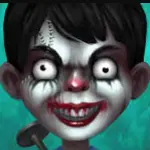How do you portray evil? In the case of a murder, do you explore who the perpetrator was in the eyes of others, their sickening charm and manipulative nature? Do you focus on the cirme itself, the cruel intentions and horrible grief left behind? Those are the two most common approaches, but The House That Jack Built offers a third, far more intriguing option: seeing the world through the psychopath’s eyes. With its satisfying blend of the murderer’s self-aggrandising and his companion Virgil’s sardonic commentary, the film leaves the audience with a fascinating truth that evil is just as banal as it is terror-inducing.
There are no words that can adequately convey the experience of watching this film or why it is so interesting, but I remember the exact moment I knew the film had captured something I hadn’t seen in anything else. During Jack’s second “incident”, we see him try to talk his way into her house, first pretending to be a policeman and then inventing an increasingly convoluted story until he finally overcomes her suspicions and enters the house. After this, of course, he goes to kill her. But things don’t go to plan, and his initial strangulation fails. When he does finally manage to successfully kill her, he then runs into a new problem: he can’t bring himself to leave because his OCD makes him paranoid that there’s blood that he didn’t clean hidden somewhere. As a result, when a policeman comes to check out a robbery somewhere else and check up on the murdered woman, Jack is almost caught and ultimately has no choice but to tell another awkward and unconvincing story to try to both cover up his crime and check the room for cleanliness one last time.

It seems like a relatively basic scene, but it captures something I haven’t seen in any other film about a murderer - the sheer awkwardness and humanity of it all. There’s a stereotypical depiction of serial killers as extremely intelligent and charming in an almost superhuman way, as in Extremely Wicked, Shockingly Evil and Vile, but The House That Jack Built flips this image on its head, turning like the negative of an image. Jack is fumbling, lame, and unpleasant; before he’s a serial killer, he’s a human being.
This is further emphasised by the ongoing dialogue between Jack and Virgil. Jack never stops trying to emphasise how he’s an artist, putting on unbearably pedantic airs as he intellectualises his art by drawing on academics and creating comparisons across academic fields. His commentary on his crimes is interesting, to be sure, and were it not for Virgil Jack might have achieved his goal of seeming highbrow. But with Virgil there with him, every self-aggrandising comment Jack makes is shot down in mere seconds. As the afterlife’s tour guide, Virgil has been through all this before and there’s nothing Jack can do to impress or shock him - and so, thanks to his commentary, the audience too realises there is nothing special or interesting about Jack. The more he waxes poetic about his crimes, the more pathetic and small he seems, like a child desperate to get a gold-star sticker that says “yes, you’re scary”.

Ultimately, it’s true that what Jack does is horrifying and terrifying. Lars von Trier doesn’t hold back, showing the audience endless blood and gore, bodies being manipulated and posed like dolls, and even a mother forced to watch her children die before being cruelly murdered herself. But what makes The House That Jack Built truly special is how von Trier shows us that none of this is impressive at the end of the day. For all he's done, Jack isn’t even sent to the deepest pit of hell - though the film’s ending reveals that he does end up there, which I explain in another article. It’s a beautiful examination of psychopaths and the banality of evil, and even the more fantastical elements of The House That Jack Built serve only to show the audience a rarely seen reality: that the most evil among us are less like cold-blooded instinctive killers and more like the most irritatingly pretentious person you know. Once the shadows of mystery are stripped away, all that’s left is just tiny, broken, and pitiful.

I truly can’t recommend this movie enough. For those who really can’t stand blood and gore, it’s definitely one to skip, as the depictions of violence are quite blunt and brutal. If you can stomach it for just one film, though, The House That Jack Built should be the film you watch. Von Trier created a wholly satisfying work, not just for the way it explores psychopaths but for its visuals and writing as well. If you’re looking for an artistic and intellectual film that still fits the Halloween mood, The House That Jack Built absolutely can’t be missed.


















































Share your thoughts!
Be the first to start the conversation.